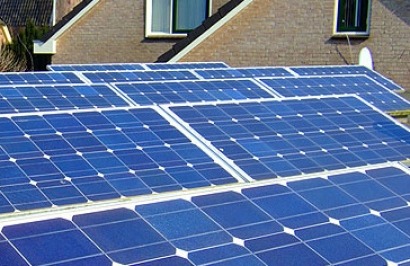
The new framework shows how tariffs will be reduced in line with reductions in technology cost and in order to keep the scheme within DECC's budget. The framework means both industry and consumers can have better forward visibility about when adjustments to tariffs will be made, and what they are likely to be.
“This now provides the industry with the security of guaranteed tariffs to 2015 allowing it to build for the future. The STA is pleased to have won its ask for quarterly reviews with more responsiveness to market size, and less emphasis on automatic tariff cuts,” comments STA Chief Executive, Paul Barwell.
A 1GW+ per annum market
DECC has provided the resources to achieve around 800MW to 1,000MW of solar installations each year to 2015. This is more per annum than the original FiT scheme anticipated over five years, which reflects the great achievements the UK industry has made in increasing efficiency and bringing down costs.
These figures do not include large-scale projects that are able to use the Renewables Obligation (with 2 ROCs available for large-scale PV), of which there could be a further 300-600MW installed before April 2013.
DECC will also be revising its Renewables Roadmap to offer clear recognition that solar has a major role to play in the UK electricity system.
“Last year STA published its Solar Revolution Strategy arguing for a minimum 1GW per annum industry. Today’s announcement proves that the STA has won its case for proper recognition for the role of solar and the development of a mature solar market in the UK,” Barwell continues.
Barwell’s association has won many of its key asks this week. The tariff for a (sub-4kW) domestic system from 1 August will be 16p, slightly lower than the STA wanted. However, investor income will be further boosted by the increase in the export bonus to 4.5p (from 3.2p today).
"We remain very concerned that the market has stalled, and the recession certainly hasn't helped. However, today's announcement means we can now be confident that even when tariffs are adjusted on 1 August, solar will still offer attractive returns to consumers – certainly when compared to other investments currently available,” says Barwell. “It is vital consumers understand tariffs can come down because the costs of solar have come down – there is a faulty perception out there that cuts mean solar doesn't pay. In fact, solar offers similar returns today as when the FiT scheme began because the industry has been so successful at reducing technology and installation costs.
“Furthermore, the relative income from a PV system is likely to be better than DECC suggests today because energy bills are set for another significant increase this year. So we expect to see more and more people turning to solar to save money, not just the planet. Today’s announcement should help restore confidence about the stability of the industry and Government's commitment to the growth of this sector.”
Features of the new cost control framework advocated by STA and welcomed today include:
Features of the new cost control framework where STA has concerns:
The STA reveals that it will be carrying out further analysis, including on returns, on the proposals published today for its members. "The fact is solar is one of the best investments in town for householders. We need Government now to work with us in this very difficult economic climate to get the message out that this tremendous technology is a great investment," STA Chairman, Alan Aldridge, concludes.
On announcing the new Fit regime, Energy and Climate Change Minister Greg Barker said: “Today starts a new and exciting chapter for the solar industry. The sector has been through a difficult time, adjusting to the reality of sharply falling costs, but the reforms we are introducing today provide a strong, sustainable foundation for growth for the solar sector. We can now look with confidence to a future for solar which will see it go from a small cottage industry, anticipated under the previous scheme, to playing a significant part in Britain's clean energy economy”.
For additional information:

